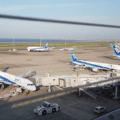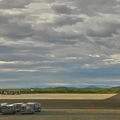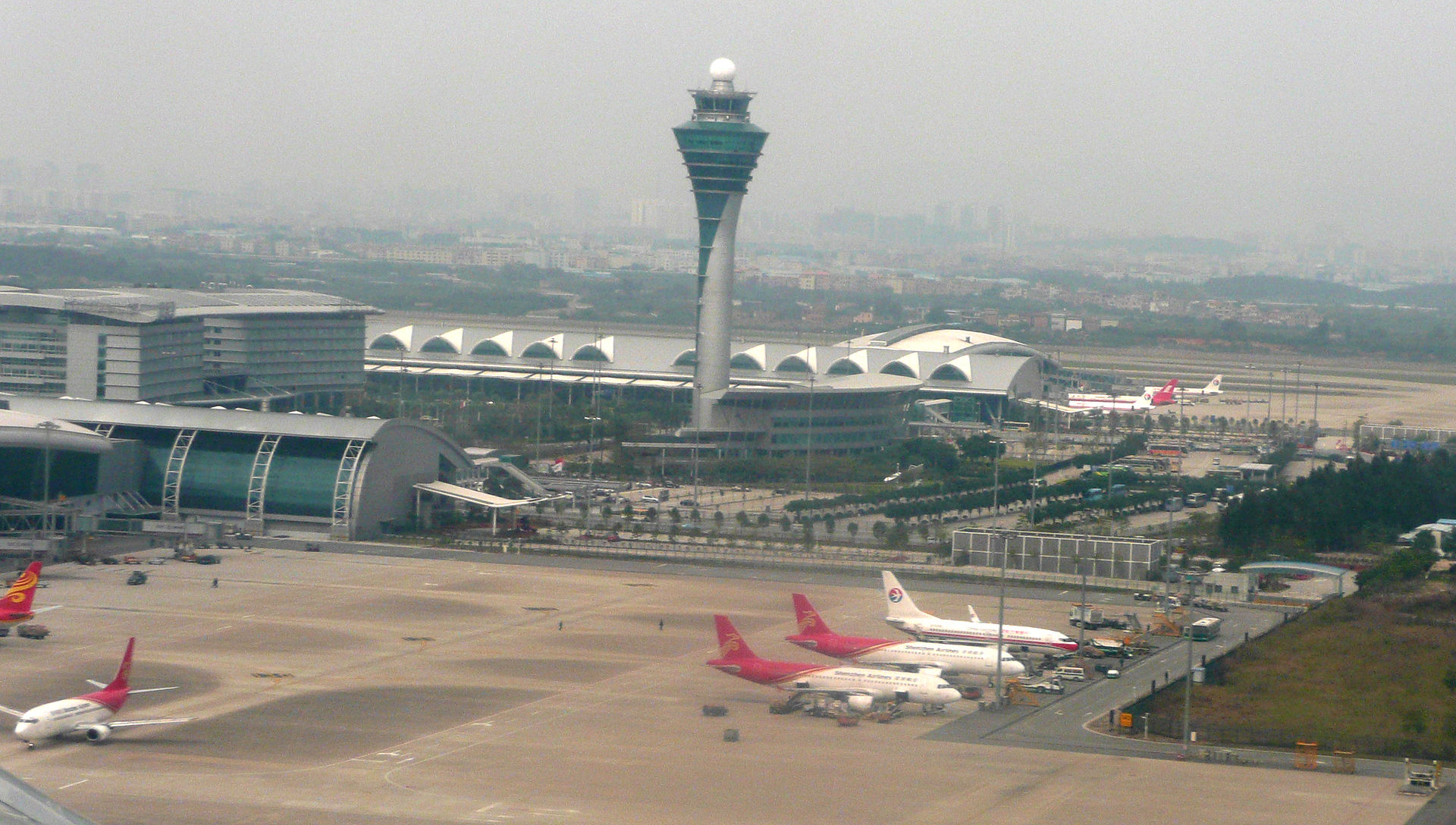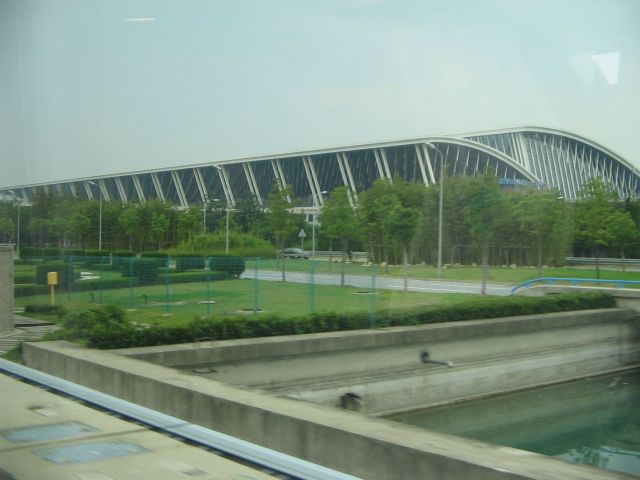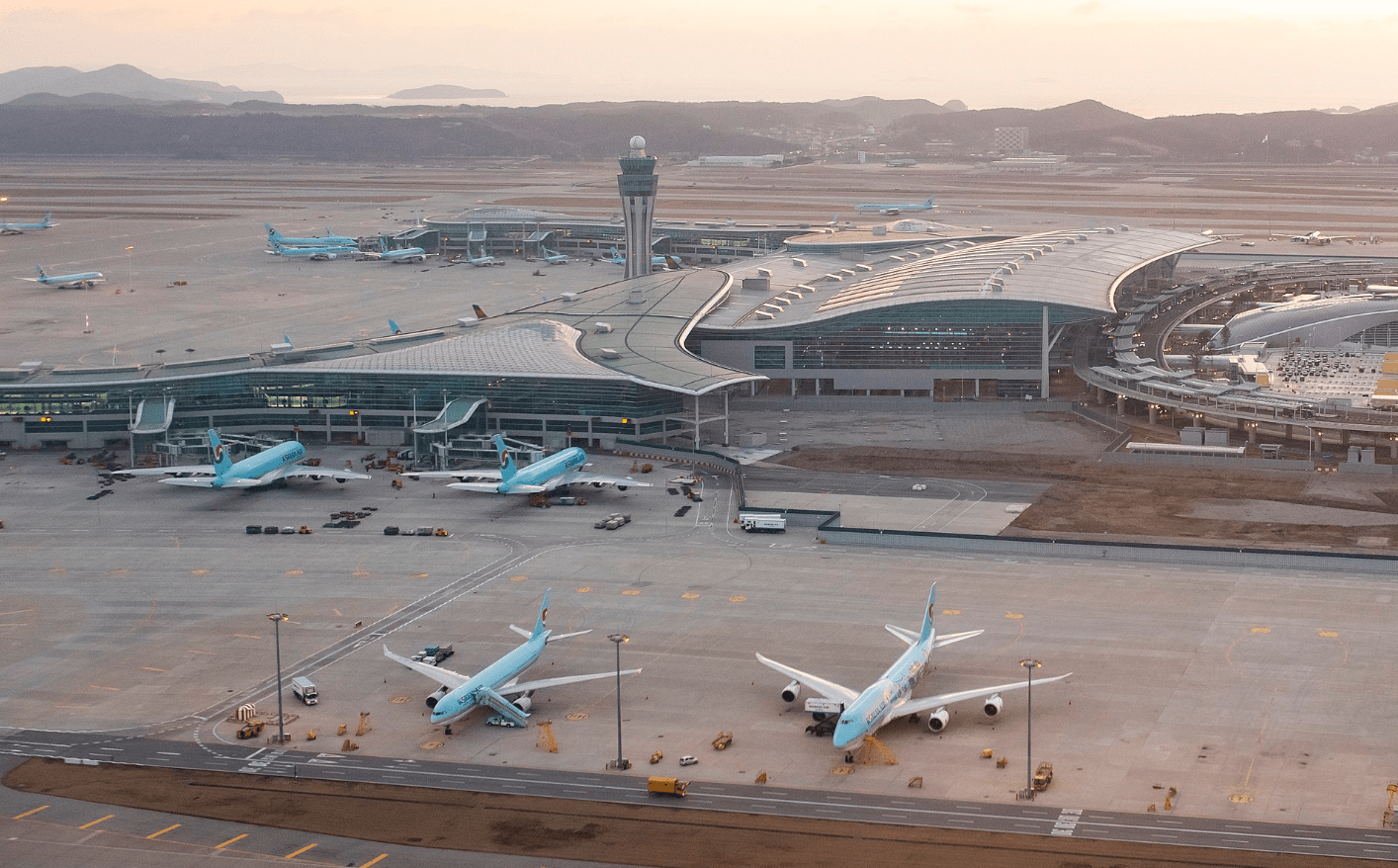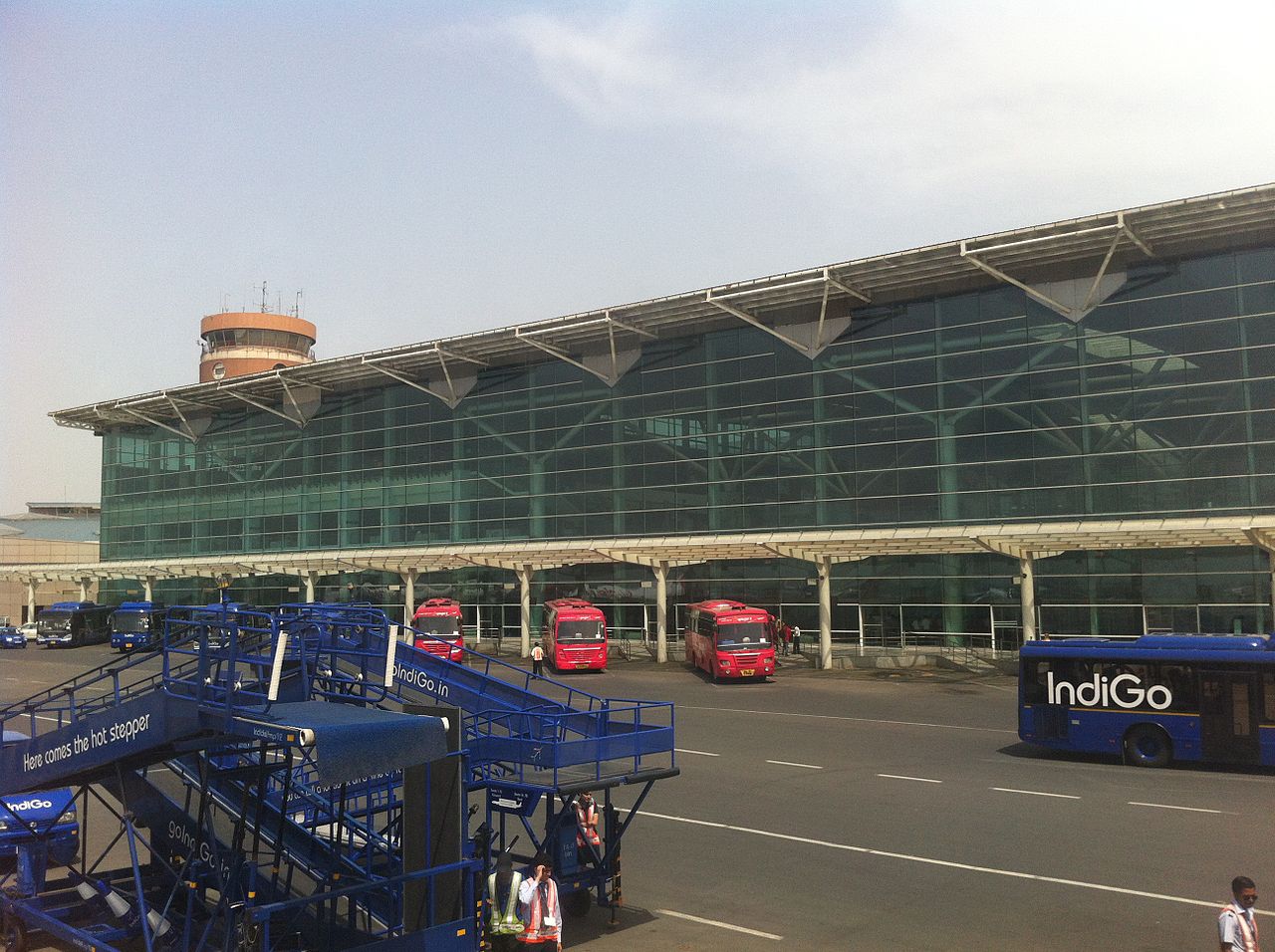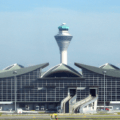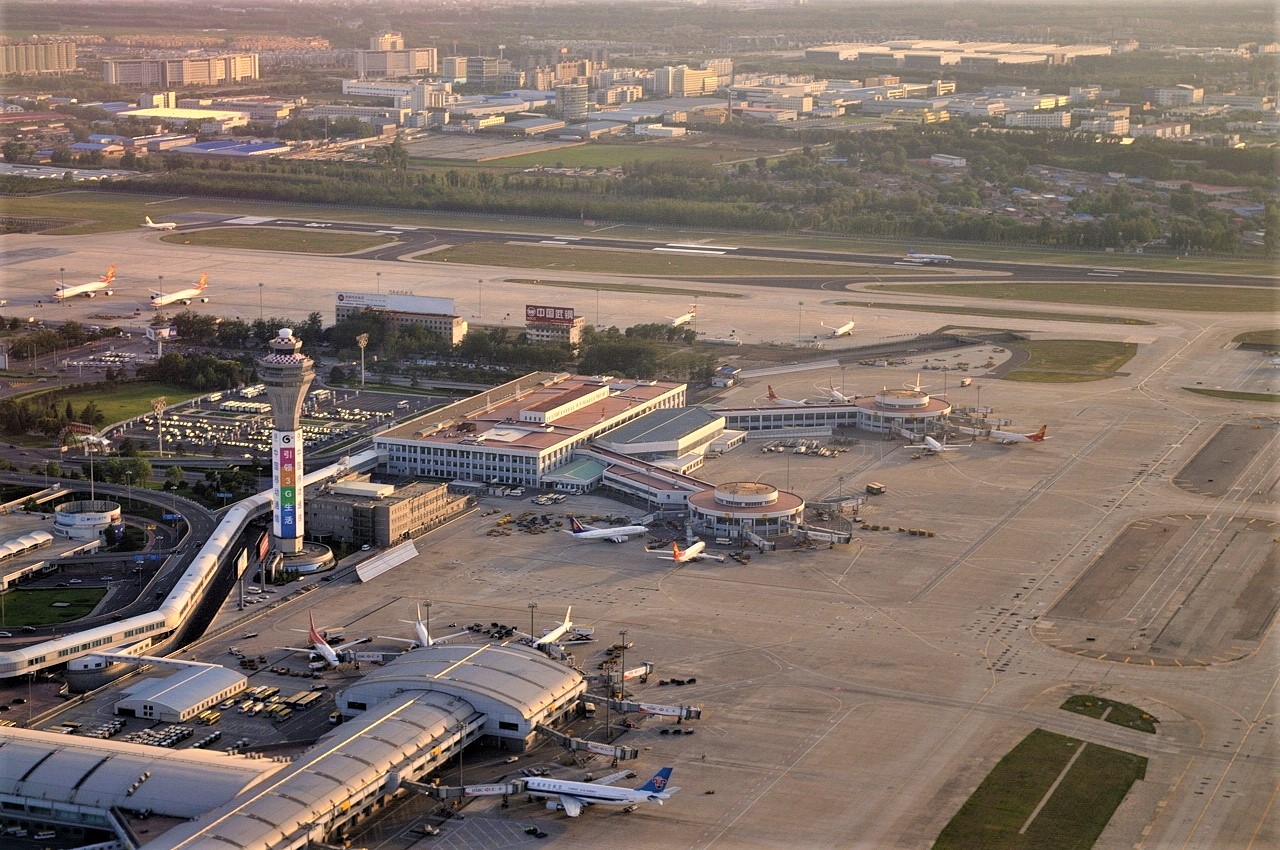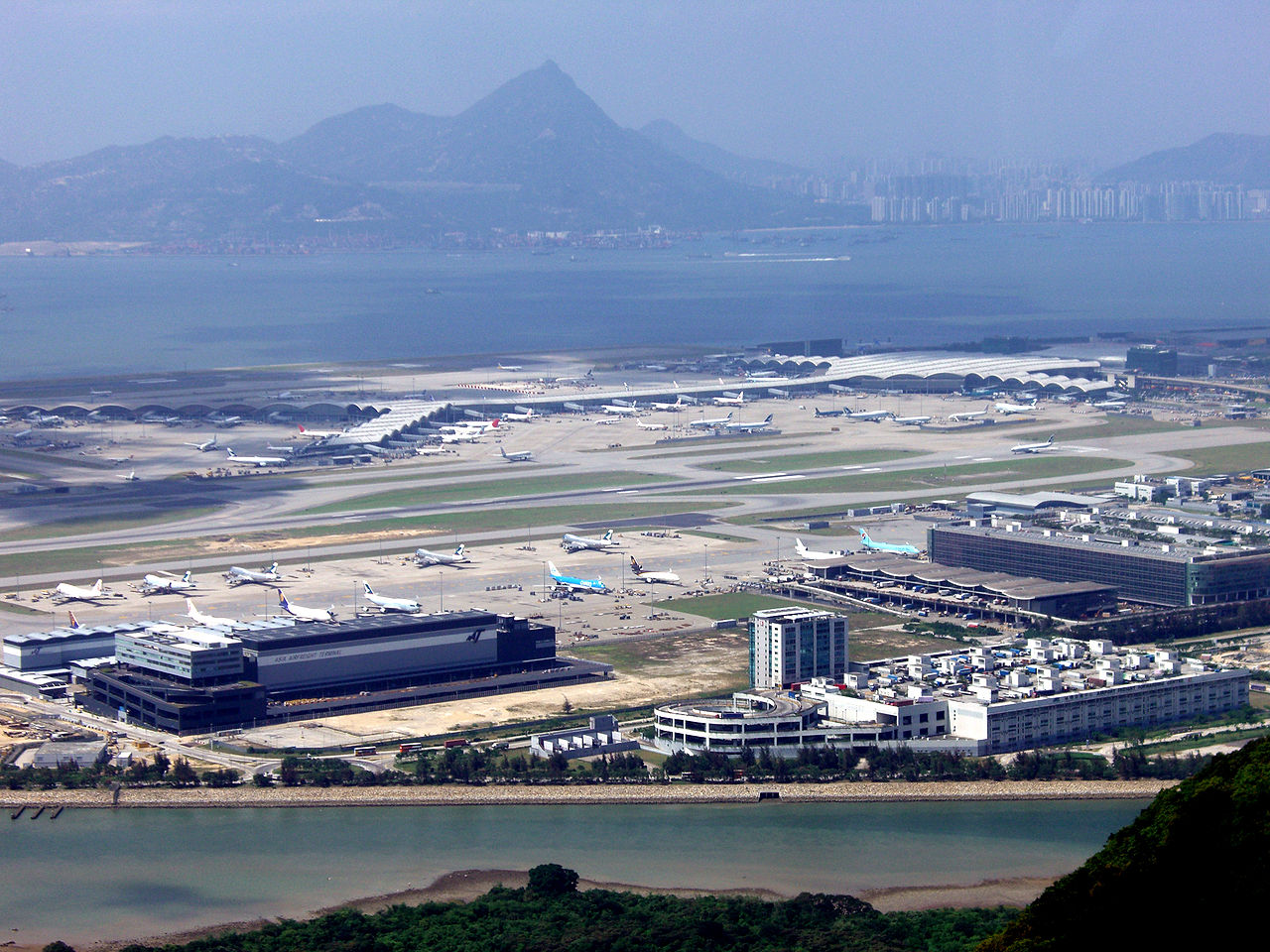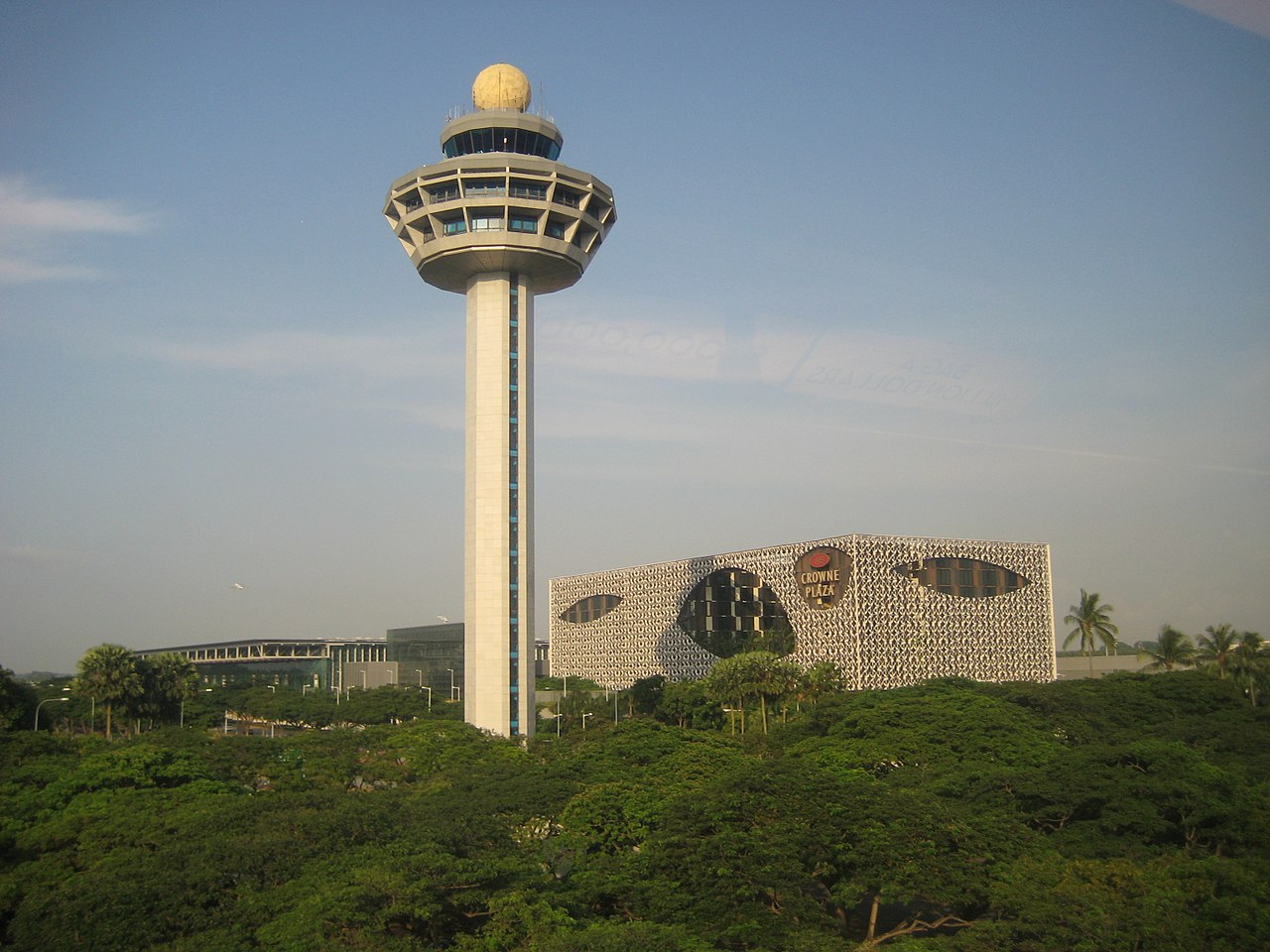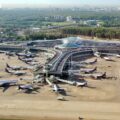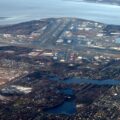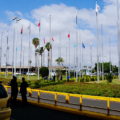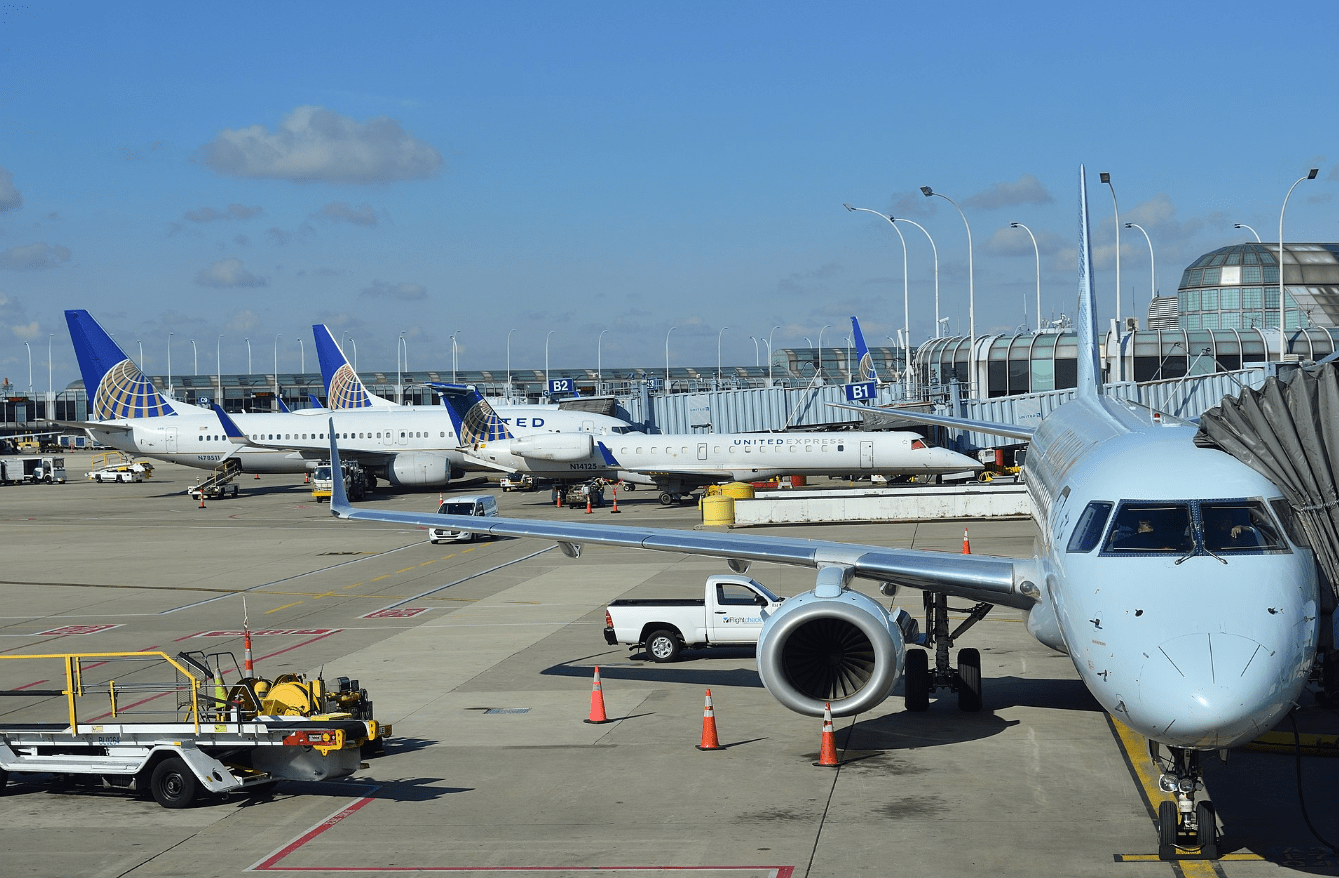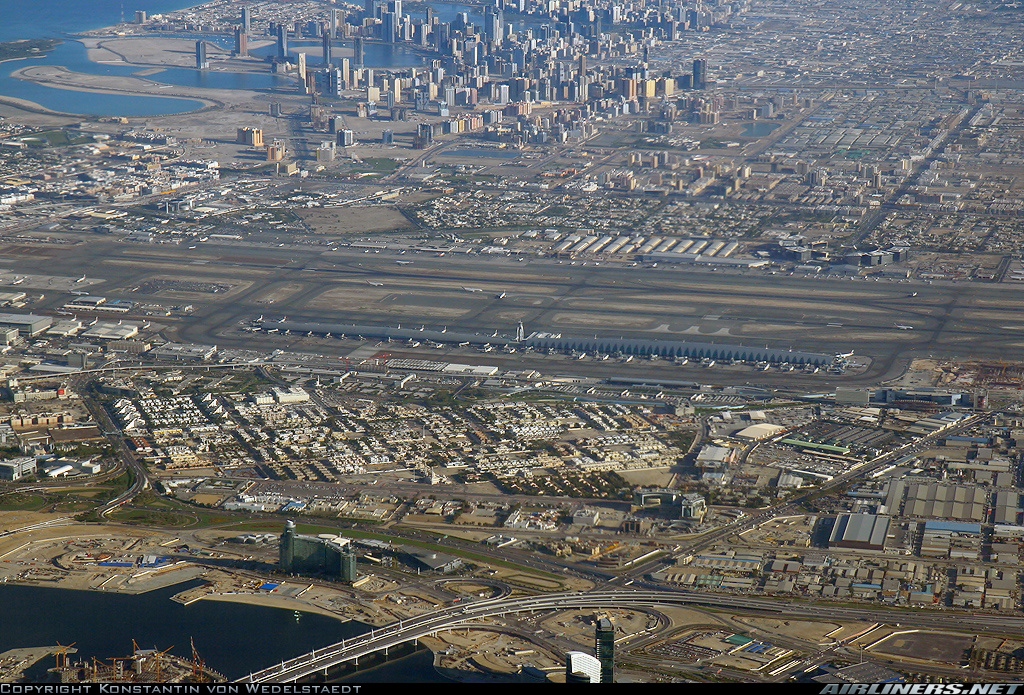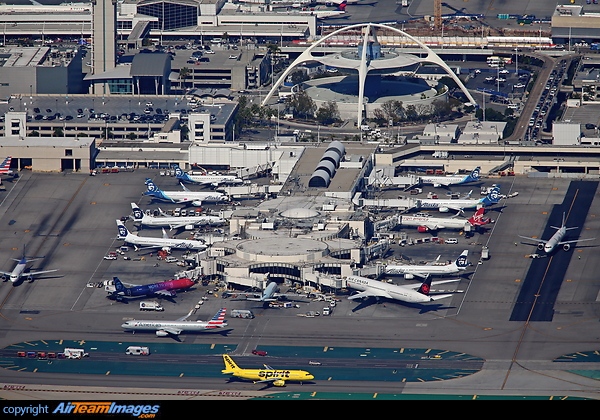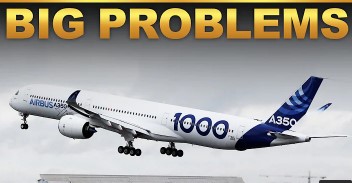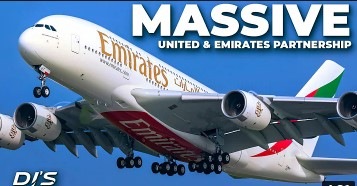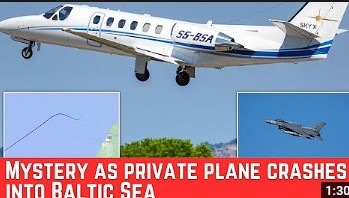Tokyo Haneda Airport
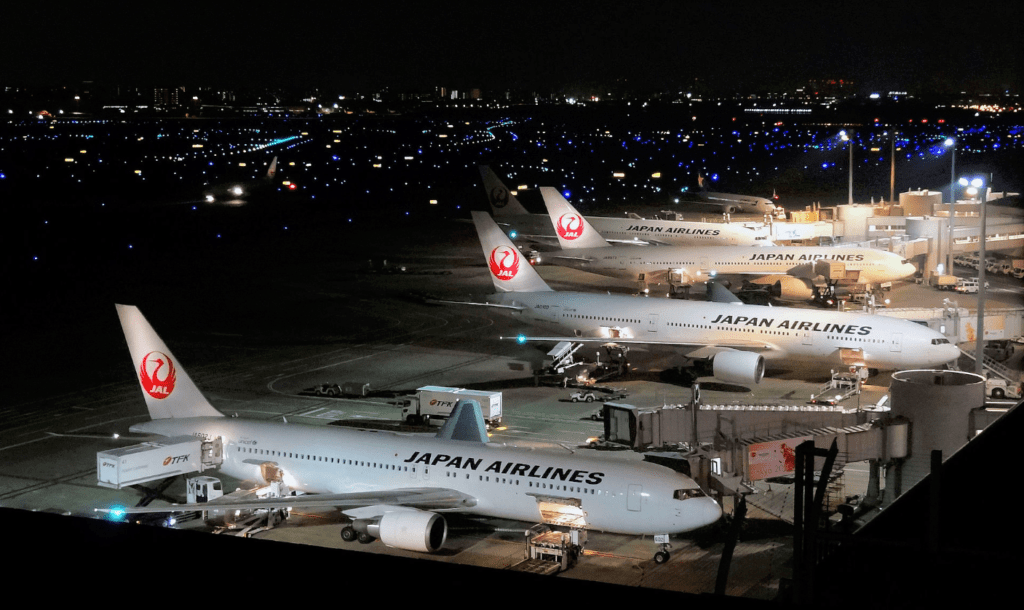
Source: File:Haneda_Airport_T1_Night_View.JPG
| IATA: HND ICAO: RJTT WMO: 47671 | |
| Airport type | Public |
| Operator | United States Air Force (airspace) Civil Aviation Bureau, MLIT (airfield) Japan Airport Terminal Co., Ltd. (Terminal 1 and 2) Tokyo International Air Terminal Corp. (Terminal 3) |
| Serves | Greater Tokyo Area |
| Location | Ōta, Tokyo, Japan |
| Hub for | Japan AirlinesAll Nippon AirwaysSkymark AirlinesAir DoSolaseed AirStarFlyer |
| Elevation AMSL | 6 m / 21 ft |
| Coordinates |  35°33′12″N 139°46′52″ECoordinates: 35°33′12″N 139°46′52″ECoordinates:  35°33′12″N 139°46′52″E 35°33′12″N 139°46′52″E |
| Website | tokyo-haneda.com/en/ |
Tokyo International Airport (東京国際空港, Tōkyō Kokusai Kūkō), commonly known as Haneda Airport (羽田空港, Haneda Kūkō), Tokyo Haneda Airport, and Haneda International Airport (IATA: HND, ICAO: RJTT), is one of the two primary airports that serve the Greater Tokyo Area, and is the primary base of Japan’s two major domestic airlines, Japan Airlines (Terminal 1) and All Nippon Airways (Terminal 2), as well as Air Do, Skymark Airlines, Solaseed Air, and StarFlyer. It is located in Ōta, Tokyo, 15 kilometres (9.3 mi) south of Tokyo Station.
Haneda was the primary international airport serving Tokyo until 1978; from 1978 to 2010, Haneda handled almost all domestic flights to and from Tokyo as well as “scheduled charter” flights to a small number of major cities in East Asia, while Narita International Airport handled the vast majority of international flights. In 2010, a dedicated International Terminal, current Terminal 3, was opened at Haneda in conjunction with the completion of a fourth runway, allowing long-haul flights during night-time hours. Haneda opened up to long-haul service during the daytime in March 2014, with carriers offering nonstop service to 25 cities in 17 countries. The Japanese government is currently encouraging the use of Haneda for premium business routes and the use of Narita for leisure routes and by low-cost carriers.
Haneda handled 87,098,683 passengers in 2018; by passenger throughput, it was the third-busiest airport in Asia and the fourth-busiest in the world, after Hartsfield–Jackson Atlanta International Airport, Beijing Capital International Airport (Asia’s busiest), and Dubai International Airport. It is able to handle 90 million passengers per year following its expansion in 2010. With Haneda and Narita combined, Tokyo has the third-busiest city airport system in the world, after London and New York City.
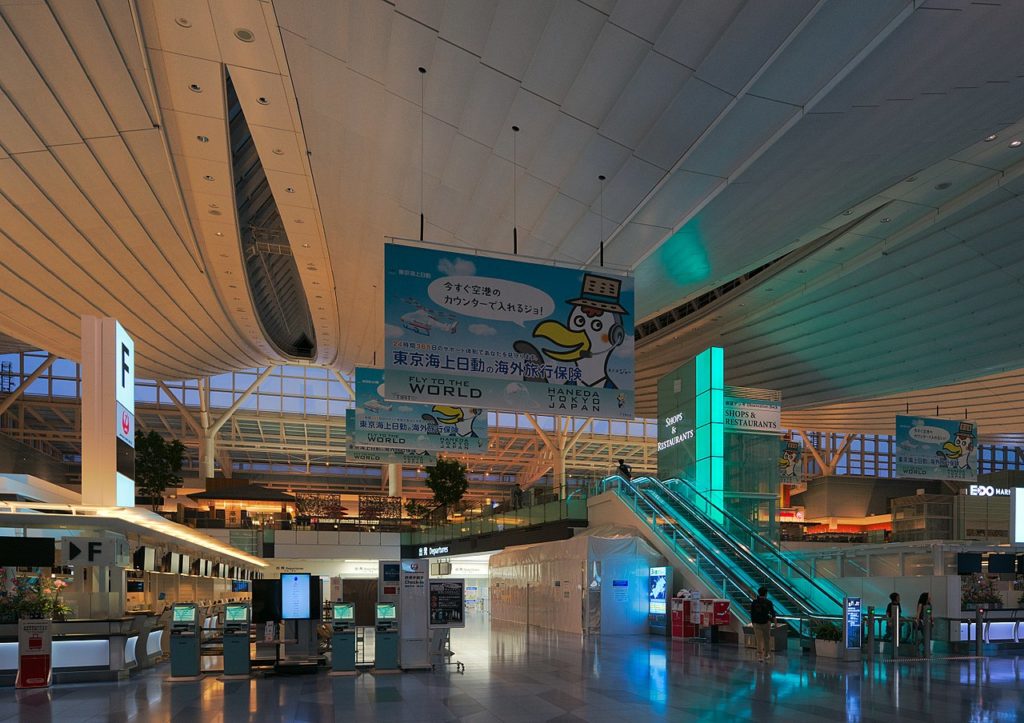
Source: Daniel L. Lu (user:dllu)
Facilities
Haneda Airport has three passenger terminals. Terminal 1 and 2 are connected by an underground walkway. A free inter-terminal shuttle bus connects all terminals on the landside. Route A runs between Terminal 1 and 2 every four minutes and Route B runs oneway from Terminal 3, 2, 1, then back to Terminal 3 every four minutes.
Haneda Airport is open 24 hours, although Terminal 1 and the domestic sections of Terminal 2 are only open from 5:00 am to 12:00 am. Terminal hours may be extended to 24-hour operation due to StarFlyer’s late-night and early-morning service between Haneda and Kitakyushu, which began in March 2006. International sections of Terminal 2 and 3 are open 24 hours a day.
All three passenger terminals are managed and operated by private companies. Terminal 1 and 2 are managed by Japan Airport Terminal Co., Ltd. (日本空港ビルディング株式会社, Nippon Kūkō Birudingu Kabushikigaisha), while Terminal 3 is managed by Tokyo International Air Terminal Corporation (東京国際空港ターミナル株式会社, Tōkyō Kokusai Kūkō Tāminaru Kabushikigaisha). The critical facilities of the airport such as runways, taxiways and aprons are managed by Ministry of Land, Infrastructure, Transport and Tourism. As of March 2013, Terminal 1 and 2 have 47 jetways altogether.

Source: Purplepumpkins
Terminals
Terminal 1
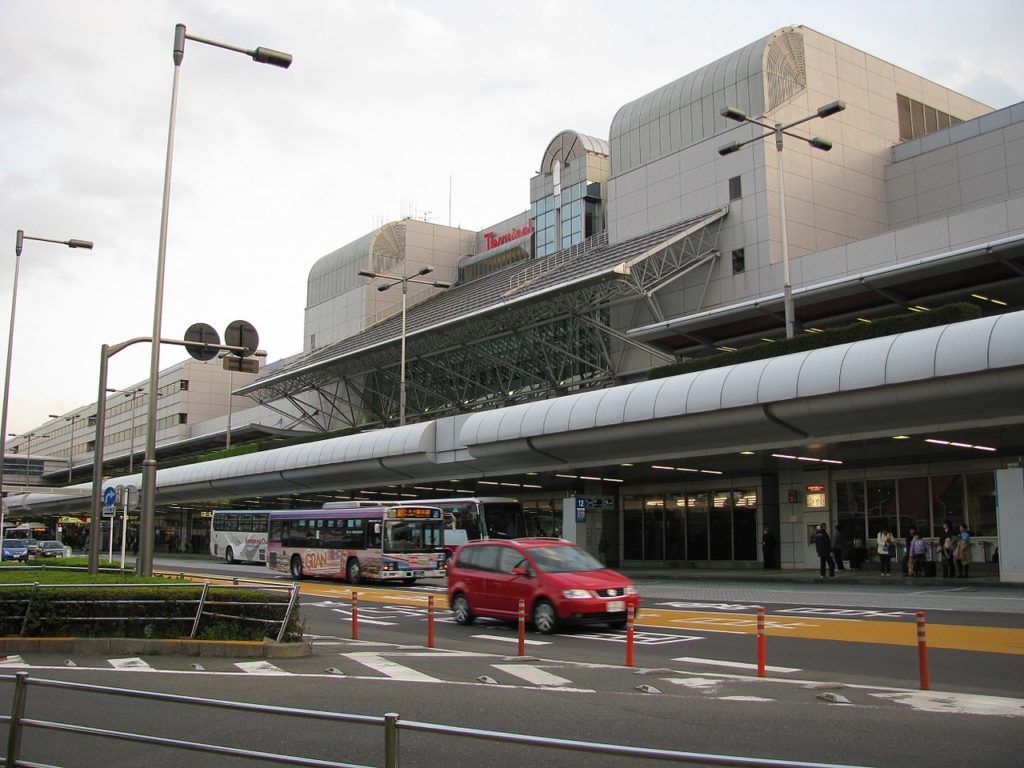
Source: Aimaimyi
Terminal 1 called “Big Bird” opened in 1993, replacing the smaller 1970 terminal complex. It is exclusively used for domestic flights within Japan and is served by Japan Airlines, Skymark Airlines, and Star Flyer flights to Kyushu Island.
The linear building features a six-story restaurant, shopping area and conference rooms in its center section and a large rooftop observation deck with open-air rooftop café. The terminal has gates 1 through 24 assigned for jet bridges and gates 31-40 and 84-90 assigned for ground boarding by bus.
Terminal 2
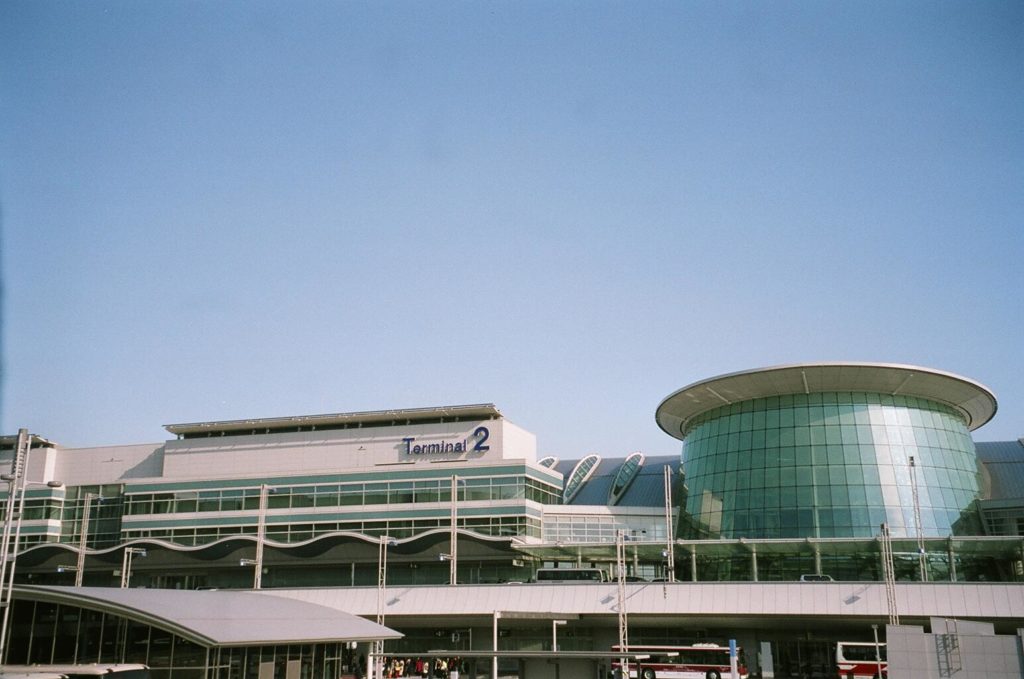
Source: Araisyohei(talk)
Terminal 2 opened on December 1, 2004. The construction of Terminal 2 was financed by levying a ¥170 (from 1 April 2011) passenger service facility charge on tickets, the first domestic Passenger Service Facilities Charge (PSFC) in Japan.
Terminal 2 is served by All Nippon Airways, Air Do, Solaseed Air, and StarFlyer for their domestic flights. Starting March 29, 2020, some All Nippon Airways’ international flights will utilize Terminal 2 after the expansion and addition of CIQ facilities (Customs, Immigration, Quarantine) in time for Tokyo 2020 Summer Olympics.
The terminal features an open-air rooftop restaurant, a six-story shopping area with restaurants and the 387-room Haneda Excel Hotel Tokyu. The terminal has gates 51 through 71 assigned with jet bridges, gates 46–48 in satellite, and gates 500 through 511 assigned for ground boarding by bus.
Terminal 3
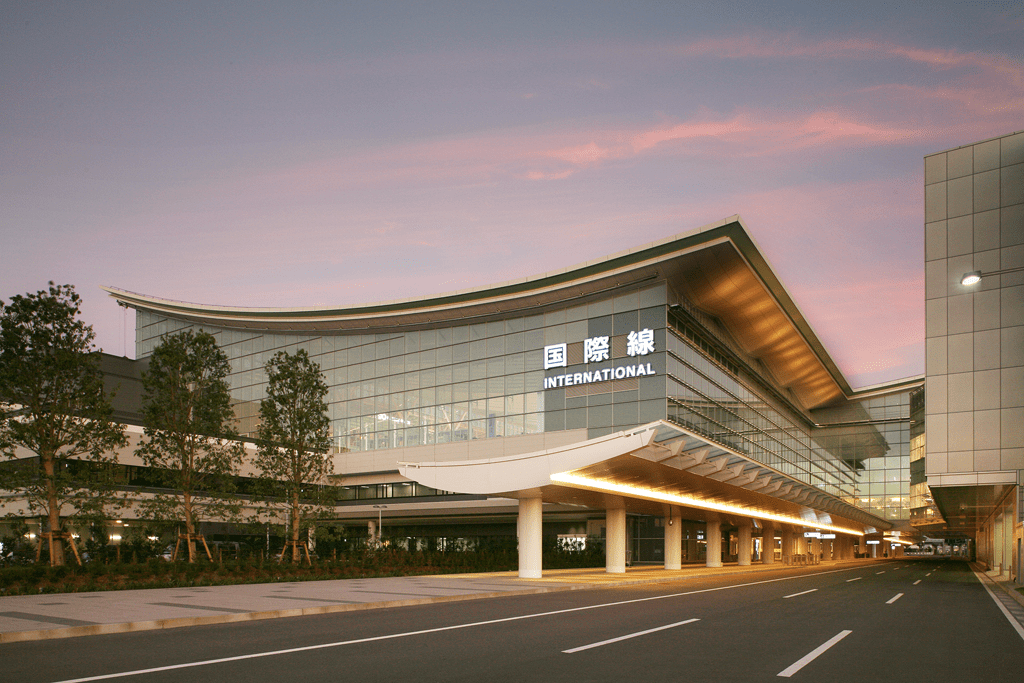
Source: 梓設計
Terminal 3, formerly called International Terminal, opened on October 21, 2010, replacing much smaller 1998 International Terminal adjacent to Terminal 2. The terminal serves most international flights at Haneda, except for some All Nippon Airways flights departing from Terminal 2. The first two long-haul flights were scheduled to depart after midnight on October 31, 2010 from the new terminal, but both flights departed ahead of schedule before midnight on October 30.
The Terminal 3 has airline lounges operated by All Nippon Airways (Star Alliance), Japan Airlines (oneworld) and Cathay Pacific Airways (oneworld). The JAL lounge is also used by SkyTeam carriers at the airport. The terminal has gates 105-114 and 140-149 assigned with jet bridges and gates 131 through 139 assigned for ground boarding by bus.
The International Terminal was renamed to Terminal 3 on March 14, 2020 as Terminal 2 began handling international flights on March 29, 2020.
Cargo facilities
Haneda is the third-largest air cargo hub in Japan after Narita and Kansai. The airport property is adjacent to the Tokyo Freight Terminal, the main rail freight yard serving central Tokyo.
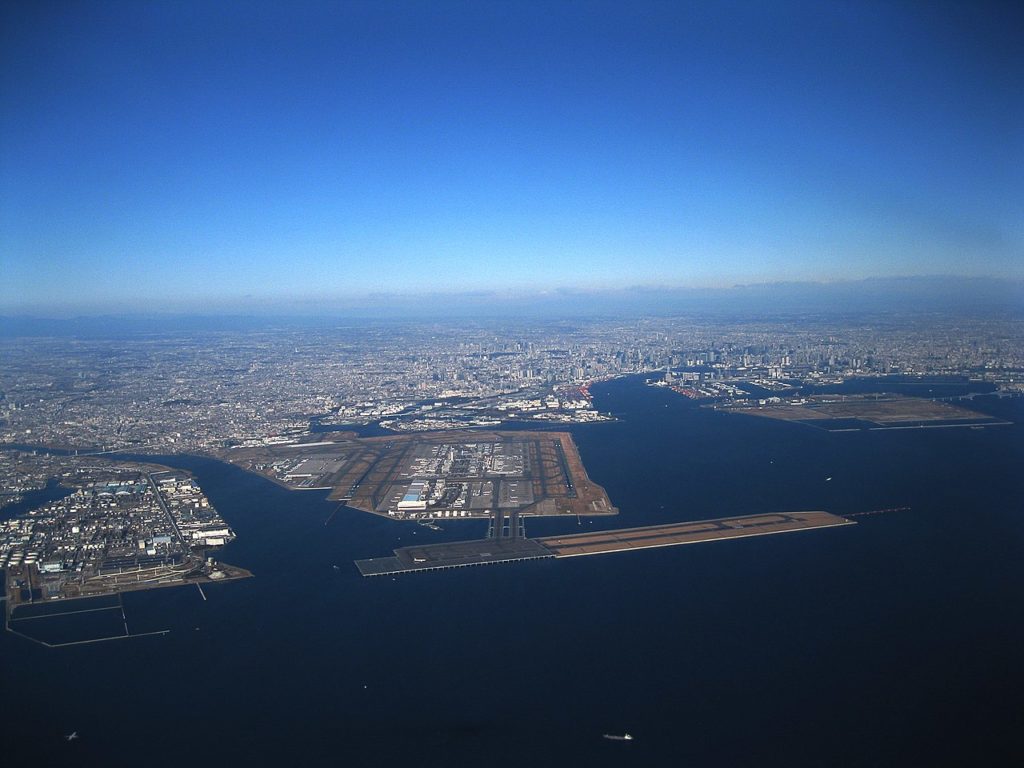
Source: Pyzhou
Other facilities
In March 2012, Haneda completed a new “Premier Gate” facility for business jets, with parking available for up to 30 days. However, business jet operations are limited to eight slots per day, and these eights slots are shared with Japanese and foreign government aircraft, which receive priority in allocation over private operators. Haneda saw less than 2,400 business jet operations in 2013 and 2014; the operator of its sole business jet hangar, Wings of Life, became engulfed in scandal in 2015 after allegedly bribing a Japan Civil Aviation Bureau official to overlook its non-payment of rent.
Haneda is often used by foreign heads of state visiting Japan, as well as by the Japanese Air Force One and other aircraft carrying government officials. (Narita is also regularly used for such flights despite its much greater distance from central Tokyo.)
Japan Airlines operates training facilities and the Safety Promotion Center at the periphery of the airport. The ANA subsidiary ANA Wings has its corporate head office on the airport property.
The Japan Coast Guard operates a Special Rescue Base (第三管区海上保安本部羽田特殊救難基地, Dai-san Kanku Kaijō Hoan Hombu Haneda Tokushu Kyūnan Kichi) at Haneda, which is used by the Special Rescue Team, an elite 36-member aerial and underwater rescue unit.
Ground transportation
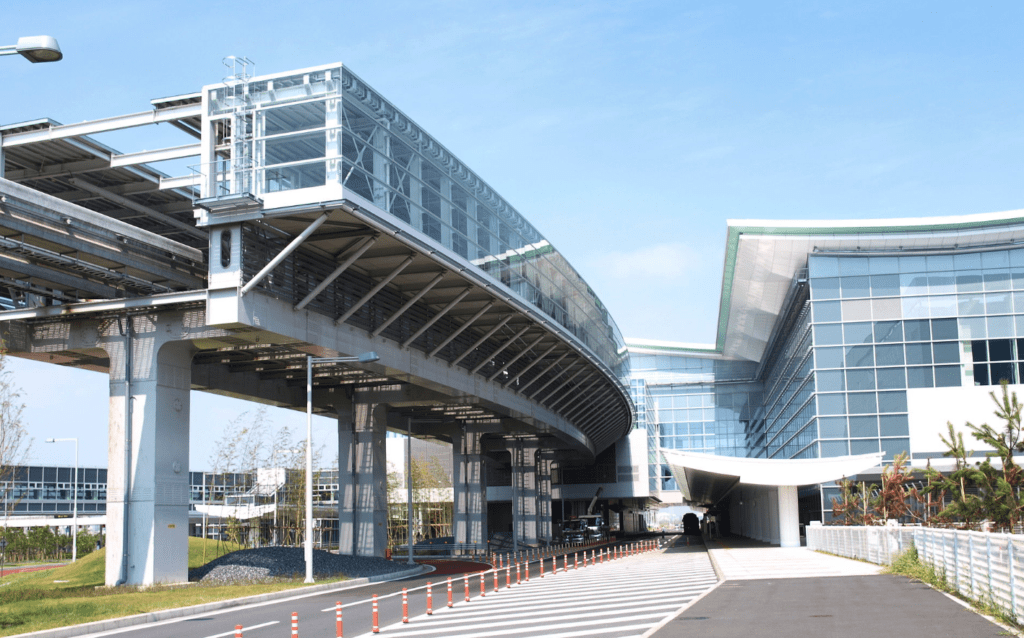
Source: AD Train
Rapid Transit
Haneda Airport is served by the Keikyu Airport Line and Tokyo Monorail.
The monorail has three dedicated stations at the Terminal 1, Terminal 2 and Terminal 3), while Keikyū operates a single station between the Terminals 1 and 2 (Terminal 1·2 Station) and a stop at the Terminal 3.
For both the monorail and Keikyu, the Terminal 3 Station was renamed from International Terminal Station in March 2020. The Keikyu Domestic Terminal station was renamed to the Terminal 1·2 Station.
Keikyū offers trains to Shinagawa Station and Yokohama Station and through service to the Toei Asakusa Line, which makes several stops in eastern Tokyo. Some Keikyū trains also run through to the Keisei Oshiage Line and Keisei Main Line, making it possible to reach Narita International Airport by train. Airport Limited Express trains make the nonstop run from Haneda Airport to Shinagawa in 11 minutes.
Tokyo Monorail trains run between the airport and Hamamatsuchō Station, where passengers can connect to the Yamanote Line to reach other points in Tokyo, or Keihin Tohoku Line to Saitama, and have a second access option to Narita Airport via Narita Express, Airport Narita, or Sōbu Line (Rapid) Trains at Tokyo Station. Express trains make the nonstop run from Haneda Airport to Hamamatsuchō in 16 minutes. Hamamatsuchō Station is also located adjacent to the Toei Oedo Line Daimon station.
Road
The airport is bisected by the Bayshore Route of the Shuto Expressway and is also accessible from Route 1. Scheduled bus service to various points in the Kanto region is provided by Airport Transport Service (Airport Limousine) and Keihin Kyuko Bus. Tokyo City Air Terminal, Shinjuku Expressway Bus Terminal and Yokohama City Air Terminal are major limousine bus terminals.
Transfer to/from Narita Airport
Haneda Airport is approximately 1.5 to 2 hours from Narita Airport by rail or bus. Keisei runs direct suburban trains (called “Access Express”) between Haneda and Narita in 93 minutes for ¥1800 as of February 2019. There are also direct buses between the airports operated by Airport Limousine Bus. The journey takes 65–85 minutes or longer depending on traffic and cost ¥3000 as of May 2012.
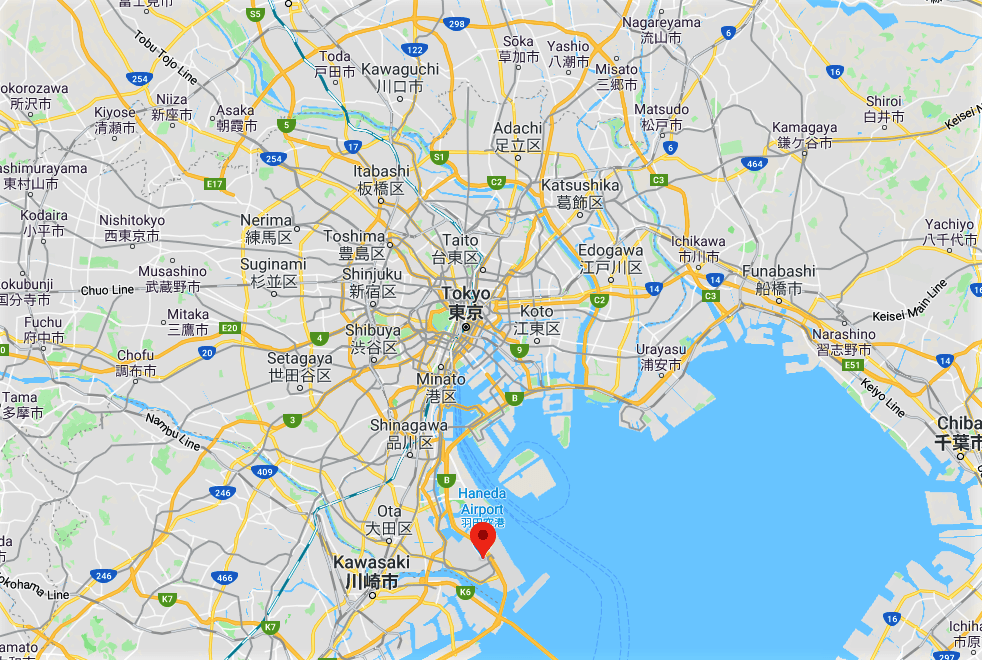
Airlines and destinations
Passenger
| Aeroflot | Moscow–Sheremetyevo |
| AirAsia X | Kuala Lumpur–International |
| Air Canada | Toronto–Pearson |
| Air China | Beijing–Capital |
| Air Do | Asahikawa, Hakodate, Kushiro, Memanbetsu, Obihiro, Sapporo–Chitose |
| Air France | Paris–Charles de Gaulle |
| Alitalia | Rome–Fiumicino |
| All Nippon Airways | Akita, Bangkok–Suvarnabhumi, Beijing–Capital, Chicago–O’Hare, Delhi, Frankfurt, Fukuoka, Guangzhou, Hachijojima, Hakodate, Hiroshima, Ho Chi Minh City, Hong Kong, Houston–Intercontinental, Honolulu, Ishigaki, Istanbul (begins 6 July 2020), Iwakuni, Iwami, Jakarta–Soekarno-Hatta, Kagoshima, Kobe, Kōchi, Komatsu, Kuala Lumpur–International, Kumamoto, Kushiro, London–Heathrow, Los Angeles, Matsuyama, Manila, Milan–Malpensa , Miyako, Miyazaki, Monbetsu, Moscow–Domodedovo (begins 1 July 2020), Munich, Nagasaki, Nagoya–Centrair, Naha, Nakashibetsu, New York–JFK, Obihiro, Odate–Noshiro, Ōita, Okayama, Osaka–Itami, Osaka–Kansai, Paris–Charles de Gaulle, Qingdao, Saga, San Francisco, San Jose (CA), Sapporo–Chitose, Seattle/Tacoma, Seoul–Gimpo, Shanghai–Hongqiao, Shanghai–Pudong, Shenzhen, Shonai, Singapore, Stockholm–Arlanda (begins 6 June 2020), Sydney, Taipei–Songshan, Takamatsu, Tokushima, Tottori, Toyama, Ube, Vancouver, Vienna, Wajima, Wakkanai, Washington–Dulles, Yonago |
| American Airlines | Dallas/Fort Worth (begins 7 July 2020), Los Angeles |
| Asiana Airlines | Seoul–Gimpo, Seoul–Incheon |
| British Airways | London–Heathrow |
| Cathay Pacific | Hong Kong |
| China Airlines | Taipei–Songshan |
| China Eastern Airlines | Beijing–Daxing, Shanghai–Hongqiao, Shanghai–Pudong |
| China Southern Airlines | Beijing–Daxing, Guangzhou |
| Delta Air Lines | Atlanta, Detroit, Honolulu, Los Angeles, Minneapolis/St. Paul, Portland (OR), Seattle/Tacoma |
| Eastar Jet | Seoul–Incheon |
| Emirates | Dubai–International |
| EVA Air | Taipei–Songshan |
| Finnair | Helsinki |
| Garuda Indonesia | Jakarta–Soekarno-Hatta |
| Hainan Airlines | Beijing–Capital |
| Hawaiian Airlines | Honolulu, Kailua–Kona |
| HK Express | Hong Kong |
| Japan Airlines | Akita, Amami Ōshima, Aomori, Asahikawa, Bangkok–Suvarnabhumi, Beijing–Capital, Chicago–O’Hare, Dalian, Dallas/Fort Worth, Delhi, Fukuoka, Guangzhou, Hakodate, Helsinki, Hiroshima, Ho Chi Minh City, Hong Kong, Honolulu, Ishigaki, Izumo, Kagoshima, Kitakyūshū, Kōchi, Komatsu, Kumamoto, Kushiro, London–Heathrow, Los Angeles, Manila, Matsuyama, Memanbetsu, Misawa, Miyako, Miyazaki, Moscow–Sheremetyevo, Nagasaki, Nagoya–Centrair, Naha, New York–JFK, Obihiro, Ōita, Okayama, Osaka–Itami, Osaka–Kansai, Paris–Charles de Gaulle, San Francisco, Sapporo–Chitose, Seoul–Gimpo, Shanghai–Hongqiao, Shanghai–Pudong, Shirahama, Singapore, Sydney, Taipei–Songshan, Takamatsu, Tokushima, Ube, Yamagata |
| Jeju Air | Seoul–Incheon |
| Juneyao Airlines | Shanghai–Pudong |
| Korean Air | Seoul–Gimpo, Seoul–Incheon |
| Lufthansa | Frankfurt, Munich |
| Okay Airways | Tianjin |
| Peach | Seoul–Incheon, Shanghai–Pudong, Taipei–Taoyuan |
| Philippine Airlines | Manila |
| Qantas | Melbourne, Sydney |
| Qatar Airways | Doha |
| S7 Airlines | Vladivostok |
| Scandinavian Airlines | Copenhagen |
| Shandong Airlines | Jinan |
| Shanghai Airlines | Shanghai–Hongqiao, Shanghai–Pudong |
| Singapore Airlines | Singapore |
| Skymark Airlines | Fukuoka, Kagoshima, Kobe, Nagasaki, Naha, Sapporo–Chitose |
| Solaseed Air | Kagoshima, Kumamoto, Miyazaki, Nagasaki, Ōita |
| Spring Airlines | Shanghai–Pudong |
| StarFlyer | Fukuoka, Kitakyūshū, Osaka–Kansai, Ube |
| Thai Airways | Bangkok–Suvarnabhumi |
| Tianjin Airlines | Tianjin |
| Tigerair Taiwan | Taipei–Taoyuan |
| Turkish Airlines | Istanbul |
| United Airlines | Chicago–O’Hare, Los Angeles, Newark, San Francisco, Washington–Dulles |
| VietJet Air | Da Nang |
| Vietnam Airlines | Hanoi |
| Virgin Australia | Brisbane |
Cargo
| ANA Cargo | Naha |
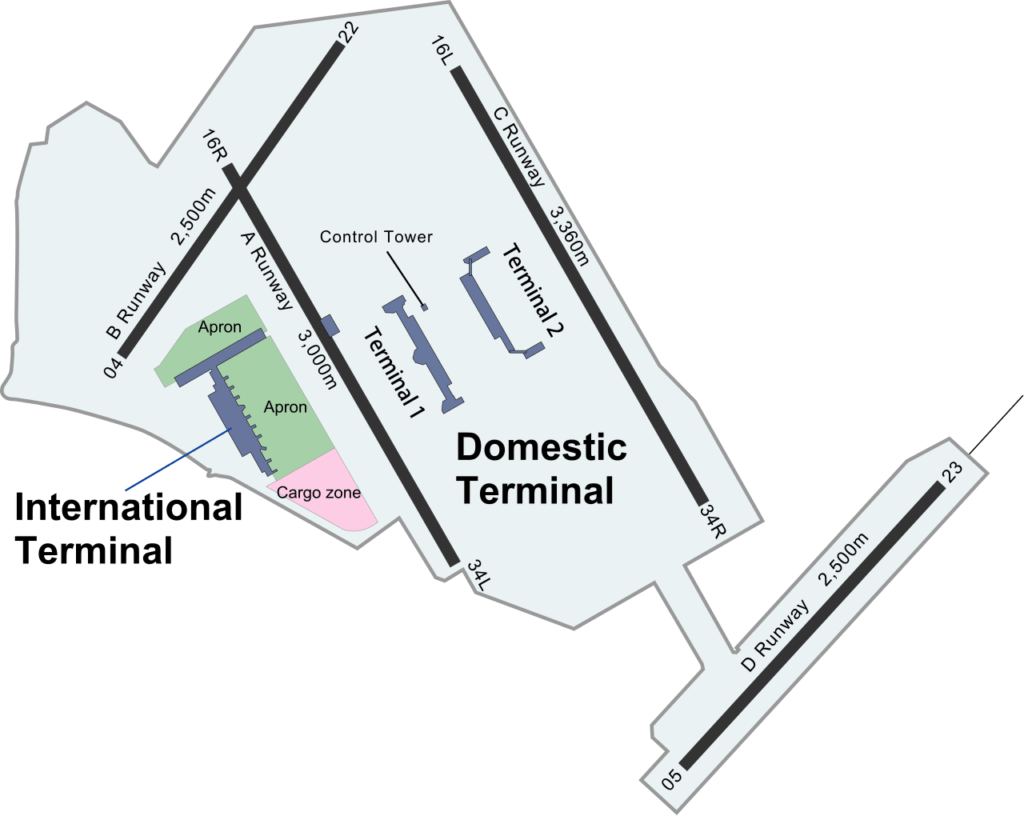
Source: Kellykaneshiro
Accidents and incidents
- In the span of a month in 1966, three accidents occurred at, or on flights inbound to or outbound from, Haneda.
- February 4, 1966: All Nippon Airways Flight 60, a Boeing 727-81, crashed into Tokyo Bay about 10.4 kilometres (6.5 mi) from Haneda in clear weather conditions while on an evening approach. All 133 passengers and crew were killed. The accident held the death toll record for a single-plane accident until 1969.
- March 4, 1966: Canadian Pacific Air Lines Flight 402, a Douglas DC-8-43 registered CF-CPK, descended below the glide path and struck the approach lights and a seawall during a night landing attempt in poor visibility. The flight had departed Hong Kong Kai Tak Airport and had almost diverted to Taipei due to the poor weather at Haneda. Of the 62 passengers and 10 crew, only 8 passengers survived.
- On March 5, 1966, less than 24 hours after the Canadian Pacific crash, BOAC Flight 911, a Boeing 707–436 registered G-APFE, broke up in flight en route from Haneda Airport to Hong Kong Kai Tak Airport, on a segment of an around-the-world flight. The bad weather that had caused the Canadian Pacific crash the day before also caused exceptionally strong winds around Mt. Fuji, and the BOAC jet encountered severe turbulence that caused the aircraft to break up in mid-air at an altitude of 16,000 feet (4,900 m), killing all 113 passengers and 11 crew. The debris field was over 16 kilometres (10 mi) long. Although there was not a cockpit voice recorder on this aircraft or any distress calls made by the crew, the investigators did find an 8mm film shot by one of the passengers that, when developed, confirmed the accident was consistent with an in-flight breakup and loss of control due to severe turbulence. There is a famous photo of the BOAC plane taxiing past the still smouldering wreckage of the Canadian Pacific DC-8 as it taxied out to the runway for its last ever takeoff.
- February 9, 1982: Japan Airlines Flight 350, a McDonnell Douglas DC-8-61, crashed on approach in shallow water 300 meters short of the runway when the captain, experiencing some form of a mental aberration, deliberately engaged the thrust-reversers for two of the four engines. Twenty-four passengers were killed.
- August 12, 1985: Japan Airlines Flight 123, a Boeing 747SR, lost control and suffered rapid decompression 12 minutes after take off due to improper maintenance, leading to the aircraft having a fatal collision with Mount Takamagahara. Out of all 524 people on the flight, four only survived the crash. One of the casualties was famous Japanese singer Kyu Sakamoto. It is the deadliest single-aircraft accident in aviation history.
- July 23, 1999: All Nippon Airways Flight 61 was hijacked shortly after takeoff. The hijacker killed the captain before he was subdued; the aircraft landed safely.
